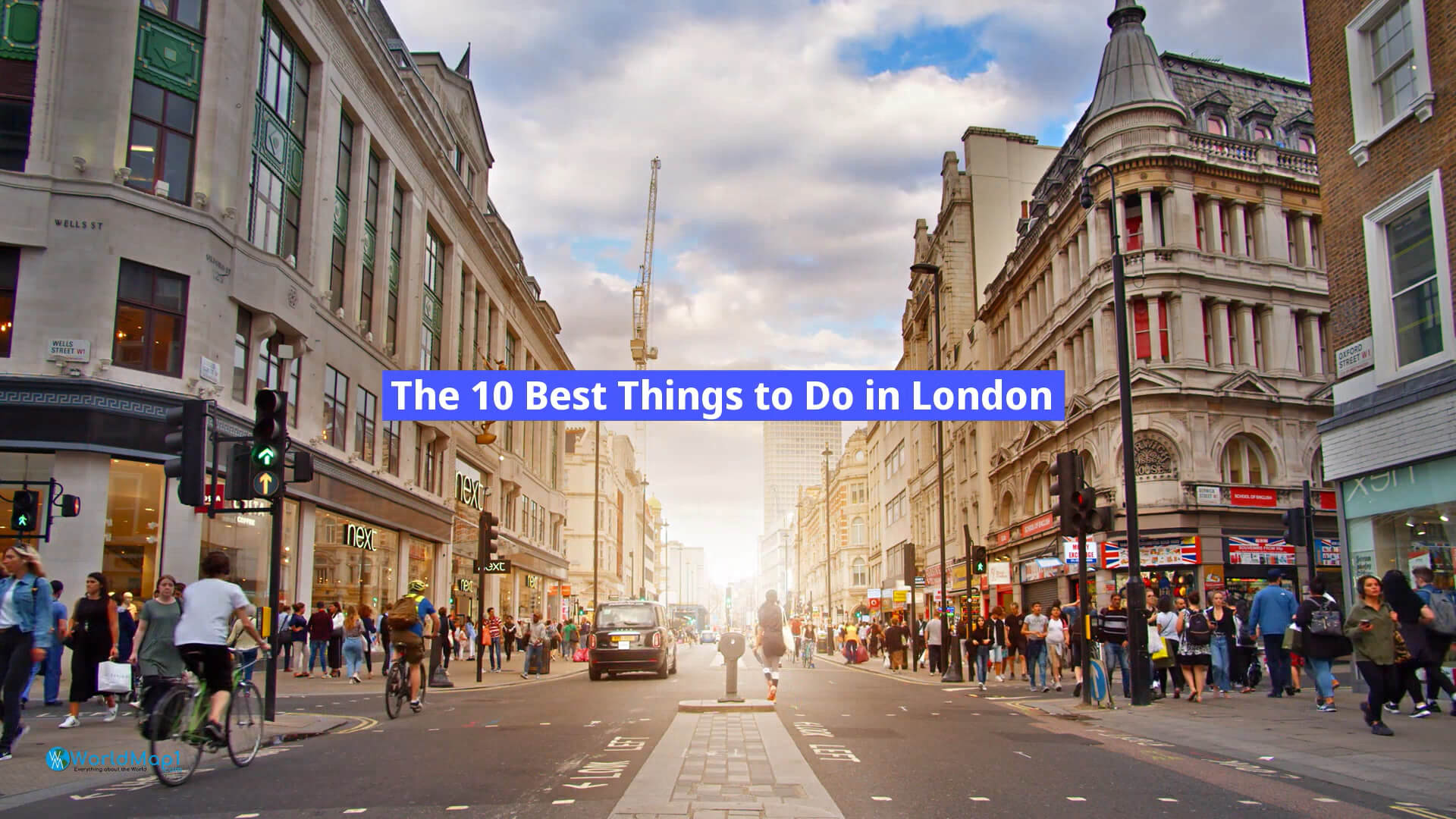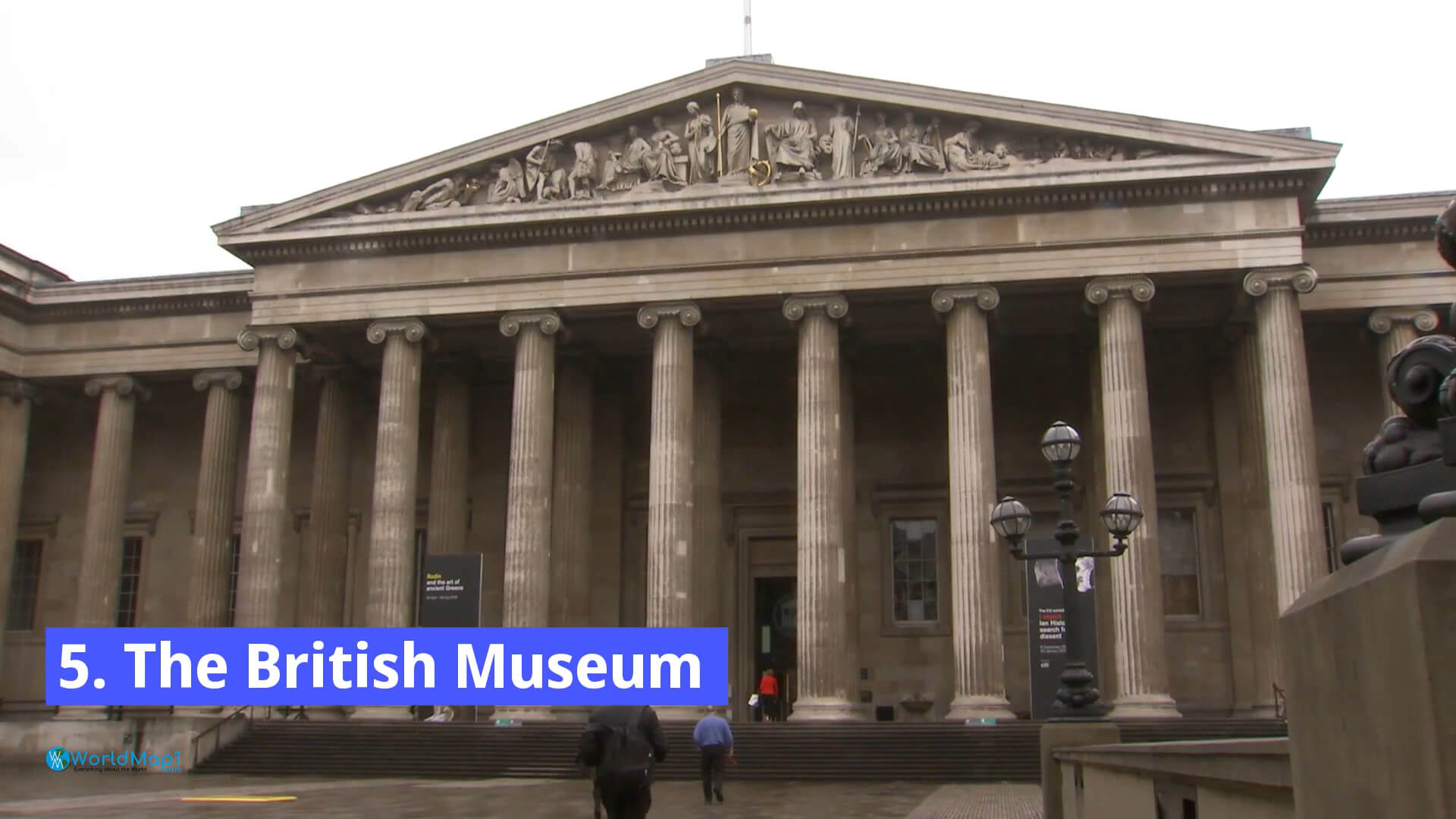Discover 10 Best Things to Do in London
Discover the best places to visit in London, with our list of the top 10 things to do in London. London is one of the most exciting and vibrant cities in the world, and with so much to do, it can be difficult to know where to start. To help narrow down the list, here are ten of our favorite London attractions that make a visit to England's capital a must.
Watch Top 10 Tourist Attractions in London
Please subscribe on "World Guide" channnel on Youtube at youtube.com/c/WorldGuide
Tower of London
 The Tower of London is a historic castle in London, located on the north bank of the River Thames, between the City of London and the borough of Tower Hamlets. The Tower was founded by William the Conqueror in 1066 as a fortress and palace.
The Tower of London is a historic castle in London, located on the north bank of the River Thames, between the City of London and the borough of Tower Hamlets. The Tower was founded by William the Conqueror in 1066 as a fortress and palace. Tower Bridge
 The Tower Bridge is a combined bascule and suspension bridge in London, England. It crosses the River Thames close to the Tower of London and has become an iconic symbol of London. The bridge consists of two bridges with each separate part considered its own structure, but they are connected by a walkway.
The Tower Bridge is a combined bascule and suspension bridge in London, England. It crosses the River Thames close to the Tower of London and has become an iconic symbol of London. The bridge consists of two bridges with each separate part considered its own structure, but they are connected by a walkway. Churchill War Rooms
 Churchill War Rooms is a historical museum in London that was built during World War II. It's located in the basement of the former Church House, which was also used as an underground bunker during World War II. The museum displays Prime Minister Winston Churchill's role in the war effort, including his military strategies and political leadership. The museum is very popular with tourists and locals alike, who come to learn about this period of history from its original source material.
Churchill War Rooms is a historical museum in London that was built during World War II. It's located in the basement of the former Church House, which was also used as an underground bunker during World War II. The museum displays Prime Minister Winston Churchill's role in the war effort, including his military strategies and political leadership. The museum is very popular with tourists and locals alike, who come to learn about this period of history from its original source material. National Gallery
 The National Gallery is one of the world's largest art museums. It has a permanent collection of over 2,300 paintings including those by Monet, Rembrandt, and Van Gogh. The national gallery is located in Trafalgar Square. It was founded in 1824 by King George IV with the purpose of showing his own private collection to the public.
The National Gallery is one of the world's largest art museums. It has a permanent collection of over 2,300 paintings including those by Monet, Rembrandt, and Van Gogh. The national gallery is located in Trafalgar Square. It was founded in 1824 by King George IV with the purpose of showing his own private collection to the public. The British Museum
 The British Museum is one of the largest museums in the world, with over eight million objects in its collection. It's also one of London's most popular attractions, with millions of visitors every year. The museum opened to the public in 1759 and is located in Bloomsbury, Central London.
The British Museum is one of the largest museums in the world, with over eight million objects in its collection. It's also one of London's most popular attractions, with millions of visitors every year. The museum opened to the public in 1759 and is located in Bloomsbury, Central London. Westminster Abbey
 Westminster Abbey is one of the most famous attractions in London. Located on the north side of the Thames River, it's a short walk from Big Ben and Parliament. The abbey has been a place of Christian worship since at least 1065 when Edward the Confessor was buried there after his death in 1066.
Westminster Abbey is one of the most famous attractions in London. Located on the north side of the Thames River, it's a short walk from Big Ben and Parliament. The abbey has been a place of Christian worship since at least 1065 when Edward the Confessor was buried there after his death in 1066. Buckingham Palace
 Buckingham Palace, the Queen's official residence and London's most famous home.
Buckingham Palace, the Queen's official residence and London's most famous home. Houses of Parliament
 The House of Parliament is the most famous building in London, and it's easy to see why. Located on the banks of the River Thames, it has been a symbol of democracy since its completion in 1852. It's home not only to both houses of parliament but also several other important institutions such as the Department for Environment, Food, and Rural Affairs (DEFRA) and Scotland Office.
The House of Parliament is the most famous building in London, and it's easy to see why. Located on the banks of the River Thames, it has been a symbol of democracy since its completion in 1852. It's home not only to both houses of parliament but also several other important institutions such as the Department for Environment, Food, and Rural Affairs (DEFRA) and Scotland Office. Hyde Park
 Hyde Park is a large urban park in the central and most populous part of London, England. It is the largest urban park in the capital, covering 140 hectares (350 acres).
Hyde Park is a large urban park in the central and most populous part of London, England. It is the largest urban park in the capital, covering 140 hectares (350 acres). St. Paul's Cathedral
 If you're looking for a place to get your history fixed, head over to St. Paul's Cathedral. Built-in 1710, it's the tallest cathedral in the UK and one of London's oldest buildings. It also serves as a popular tourist attraction and religious center for Christians throughout the world. The building is easily recognizable by its distinctive dome, which has been featured in many movies and television shows including Harry Potter and Indiana Jones.
If you're looking for a place to get your history fixed, head over to St. Paul's Cathedral. Built-in 1710, it's the tallest cathedral in the UK and one of London's oldest buildings. It also serves as a popular tourist attraction and religious center for Christians throughout the world. The building is easily recognizable by its distinctive dome, which has been featured in many movies and television shows including Harry Potter and Indiana Jones. - V&A - Victoria and Albert Museum
- Borough Market
- Up at The O2
- St. James's Park
- Covent Garden
- Camden Market
- The View from The Shard
- Sky Garden
- Regent's Park
Conclusion
Please view more about United Kingdom, and London
UK UK Map London Map- Head of Performance Marketing
- Head of SEO
- Linkedin Profile: linkedin.com/in/arifcagrici
Address: Hakarinne 2 Espoo, 02100 Uusimaa - Finland
Email: [email protected]
Phone: +358 44 230 0982
Worldmap1.com Blog
Email: [email protected]
Phone: +358 44 230 0982
Worldmap1.com Blog
Copyright WorldMap1.com 2004 - 2025. All rights reserved. Privacy Policy | Disclaimer
